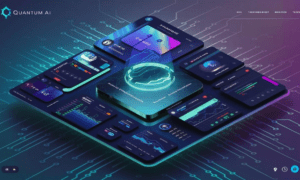Chatbot AI has become a transformational force in technology, transforming how we engage with machines. It has developed through time from basic text-based dialogues to complex, human-like interactions, influencing numerous industries and improving user experiences. The fascinating history of chatbot AI is explored in this article, along with its evolution and significant turning points.
Introduction
A specific piece of software called chatbot ai, or chatbot artificial intelligence, is used to mimic human speech. It processes user commands and inquiries using machine learning techniques and natural language processing (NLP). Chatbots have advanced greatly since they were first developed as simple programs to offer individualized and effective interactions. Let’s see how chatbot AI has developed.
The Development of Chatbots
When Joseph Weinbaum created ELIZA in the 1960s, the idea of chatbots first emerged in the middle of the 20th century. ELIZA, frequently regarded as the first chatbot, could mimic a Rogerian psychotherapist. It was mostly employed for experimental purposes, though, and had limited replies.
The Development of Rule-Based Chatbots
Following that, rule-based chatbots became more and more common. These chatbots could respond in an organized manner to certain queries and work according to a set of established rules and patterns. In the early days of the Internet, they were regularly utilized to offer automated assistance and were widely used in customer service.
Developments in Natural Language Processing (NLP)
Improvements in NLP brought about a real advancement in chatbot AI. NLP gave chatbots the ability to examine and comprehend the subtleties of human language, allowing them to answer more wisely. This ushered in the era of sophisticated conversational agents as opposed to rule-based chatbots.
Chatbots Powered By Machine Learning
Machine learning was essential to the development of chatbots. Chatbots have started to learn from and adapt to user interactions by utilizing large datasets and sophisticated algorithms. As a result, they became more adaptable and could respond to a larger variety of requests and contexts.
Introduction of Virtual Assistants
Virtual assistants like Siri, Google Assistant, and Alexa popularized Chatbot AI. These virtual assistants might play music, make reminders, and operate smart gadgets in addition to providing answers to queries. They represented an important development in the use of chatbots in regular life.
Contextual Understanding and Conversational AI
Conversational AI, which can participate in more natural and context-aware discussions, has been developed as a result of recent breakthroughs in AI. These chatbots can recall previous exchanges and offer tailored responses. They provide excellent customer support, assisting customers with intricate questions and transactions.
Business-specific chatbots
AI chatbots have also penetrated a number of sectors. Chatbots help with medical questions and appointment scheduling in the healthcare industry. They help with investment advice and account balance information in finance. Chatbots improve the buying experience, even in e-commerce, by making product recommendations and responding to client questions.
The Prospects of AI Chatbots
The potential for chatbot AI to change the world is increasing as technology develops. Among the major trends influencing the future are:
- Multimodal Interactions: Chatbots will advance to handle speech, visual, and audio inputs in addition to text, enhancing their adaptability and accessibility.
- Emotional Intelligence: As AI algorithms get better at identifying and reacting to human emotions, interactions will become more empathic.
- Cross-Platform Integration: To guarantee a consistent user experience, chatbots will integrate easily across a range of platforms and devices.
- AI-Powered Personalization: To provide highly tailored experiences, chatbots will leverage AI to examine user preferences and behavior.
- Enhanced Security: Chatbot security will be significantly improved by AI, making it more resistant to online dangers.
In conclusion, as per dailytechbyte.co.in chatbot AI has advanced significantly since its earliest days as a simple text-based program. It has become a potent tool that improves user experiences in a variety of sectors. As chatbot AI continues to advance, it is ready to continue its transformational journey and improve our daily lives with efficiency and ease.

































